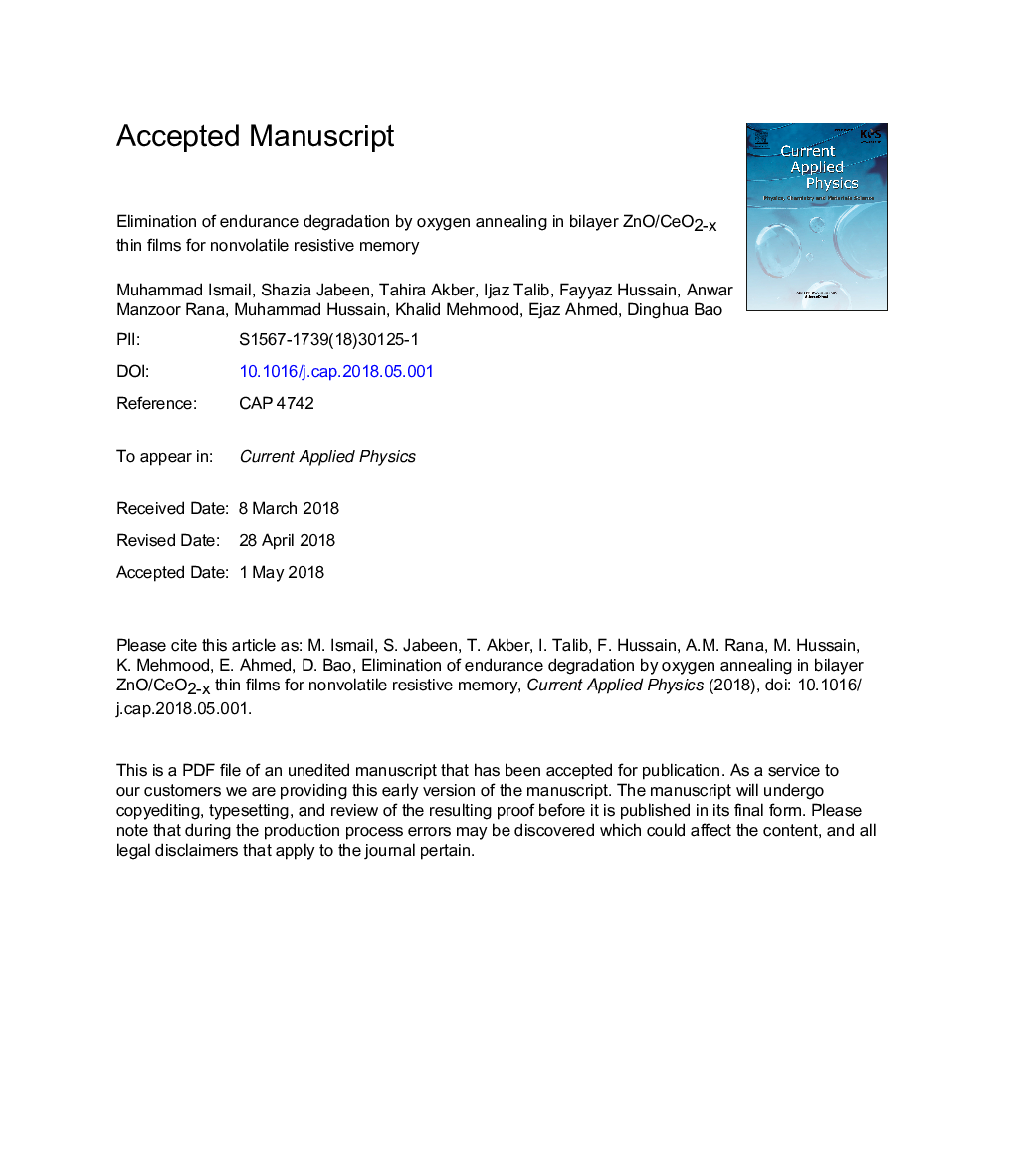| Article ID | Journal | Published Year | Pages | File Type |
|---|---|---|---|---|
| 8147660 | Current Applied Physics | 2018 | 33 Pages |
Abstract
Effect of oxygen annealing on bipolar resistive switching (BRS) properties of TiN/ZnO/CeO2-x/Pt devices was investigated. Bilayer ZnO/CeO2-x thin films were fabricated by rf-magnetron sputtering. It was observed that the improvement in cycle-to-cycle endurance degradation and uniformity of the bilayer ZnO/CeO2-x thin film is optimum at 400â¯Â°C annealing temperature due to decrease in oxygen vacancies during annealing, as confirmed by x-ray photoelectron spectroscopy. The BRS could be caused by the formation of interfacial TiON layer, which is most likely to be accountable for creating an adequate quantity of oxygen vacancies necessary for the formation and rupture of conductive filaments. Smaller Gibbs free energy of the formation of interfacial TiON (â611kJmolâ1) layer as compared to bilayer film ZnO (â650kJmolâ1) and CeO2(â1024kJmolâ1) results in an easier re-oxidation of the filaments through the oxygen exchange with TiN top electrode. The analysis of current-voltage characteristics shows that the charge transport mechanism is Schottky emission. Moreover, the temperature dependence of high resistance state (HRS) and low resistance state (LRS) revealed the physical origin of the RS mechanism, which entails the oxygen vacancies for the formation and rupture of conducting paths.
Related Topics
Physical Sciences and Engineering
Physics and Astronomy
Condensed Matter Physics
Authors
Muhammad Ismail, Shazia Jabeen, Tahira Akber, Ijaz Talib, Fayyaz Hussain, Anwar Manzoor Rana, Muhammad Hussain, Khalid Mahmood, Ejaz Ahmed, Dinghua Bao,
